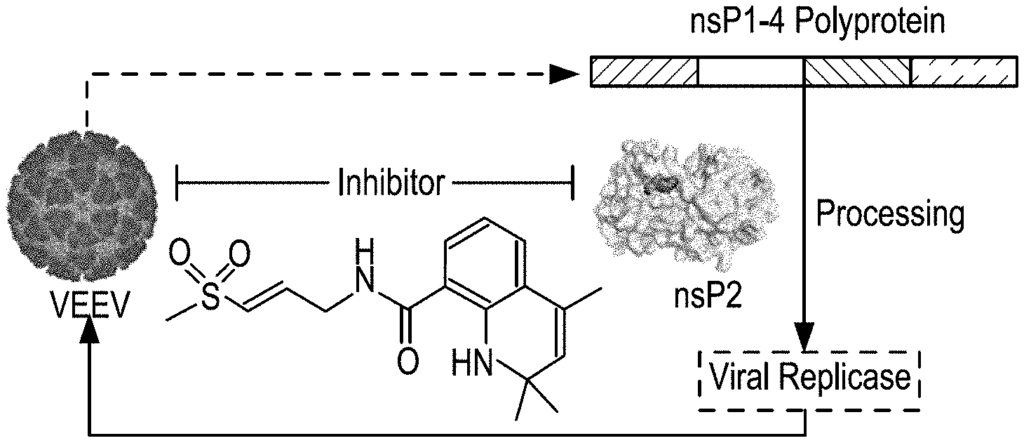Breakthrough Inhibitors for Equine Encephalitis
Introduction
This covalent inhibitor technology presents a significant advancement in combating equine encephalitis viruses, which pose a serious threat to both equine populations and humans. By inhibiting key viral proteins necessary for the replication and spread of the virus, these inhibitors offer a novel and powerful approach to treating infections. For pharmaceutical companies, veterinary medicine providers, and biotechnology firms, this technology provides an opportunity to lead in the development of therapies that target these dangerous viruses, protecting both animal and human health.
The Challenge: Managing Viral Infections in Animals and Humans
Equine encephalitis viruses, including Eastern, Western, and Venezuelan variants, are mosquito-borne pathogens that can cause severe neurological diseases in horses and humans. Current treatment options are limited and mostly preventative, with vaccines being the primary form of control. However, once infection occurs, there are few effective treatments available, leading to high mortality rates in horses and significant risk to human populations. As zoonotic diseases continue to rise in prominence, the need for effective, post-infection therapeutic options has become more urgent.
Covalent Inhibitors for Powerful Viral Control
This covalent inhibitor technology targets and neutralizes key enzymes involved in the replication of equine encephalitis viruses. By forming a covalent bond with viral proteins, the inhibitors effectively block the virus’s ability to reproduce and spread within the host, offering a direct and powerful intervention to halt disease progression. The inhibitors can be used as part of a therapeutic regimen to treat infected animals, and potentially humans, following exposure. This innovative approach provides a much-needed solution for managing outbreaks and reducing the risk of widespread infection.
Key Benefits for Pharmaceutical and Veterinary Sectors
For pharmaceutical companies, this technology represents a promising new class of antiviral treatments that could be developed into life-saving medications. Veterinary care providers can use these inhibitors to treat infected horses, providing a viable treatment option where currently none exists. Biotechnology firms can explore the potential of these inhibitors in broader antiviral applications, including use in human medicine for emerging zoonotic threats. This technology offers a significant advantage in controlling viral outbreaks in equine populations and preventing potential spillover into human populations.
Invest in Antiviral Innovation
Licensing this inhibitor technology for equine encephalitis positions your company as a leader in the fight against infectious diseases. By offering an innovative solution for treating viral infections in both animals and humans, your business can meet the rising demand for antiviral therapies that protect against zoonotic diseases. This technology provides a strategic investment for companies focused on improving public health, advancing veterinary medicine, and delivering cutting-edge antiviral solutions.

- Abstract
- Claims
Share
Title
Covalent inhibitors of equine encephalitis virus
Inventor(s)
Ifedayo Victor Ogungbe, Huaisheng ZHANG
Assignee(s)
Jackson State University
Patent #
20220235007
Patent Date
July 28, 2020






